 I am currently working on the MNIST dataset. My model has overfit the training data and I want to reduce the overfitting by using weight_decay. I am currently using 0.1 as the value for weight_decay which is giving me bad results as my validation loss and training loss are not decreasing. However, I want to experiment with different values for weight_decay. So that i can plot the different amounts of weight_decay on the x-axis and the performance of validation set on the y-axis. How do i do that? store the values in a list and use a for loop to iterate through? Below is the code that i have tried until now.
I am currently working on the MNIST dataset. My model has overfit the training data and I want to reduce the overfitting by using weight_decay. I am currently using 0.1 as the value for weight_decay which is giving me bad results as my validation loss and training loss are not decreasing. However, I want to experiment with different values for weight_decay. So that i can plot the different amounts of weight_decay on the x-axis and the performance of validation set on the y-axis. How do i do that? store the values in a list and use a for loop to iterate through? Below is the code that i have tried until now.
class NN(nn.Module):
def __init__(self):
super().__init__()
self.layers = nn.Sequential(
nn.Flatten(),
nn.Linear(784,4096),
nn.ReLU(),
nn.Linear(4096,2048),
nn.ReLU(),
nn.Linear(2048,1024),
nn.ReLU(),
nn.Linear(1024,512),
nn.ReLU(),
nn.Linear(512,256),
nn.ReLU(),
nn.Linear(256,128),
nn.ReLU(),
nn.Linear(128,64),
nn.ReLU(),
nn.Linear(64,32),
nn.ReLU(),
nn.Linear(32,16),
nn.ReLU(),
nn.Linear(16,10))
def forward(self,x):
return self.layers(x)
def accuracy_and_loss(model, loss_function, dataloader):
total_correct = 0
total_loss = 0
total_examples = 0
n_batches = 0
with torch.no_grad():
for data in testloader:
images, labels = data
outputs = model(images)
batch_loss = loss_function(outputs,labels)
n_batches += 1
total_loss += batch_loss.item()
_, predicted = torch.max(outputs, dim=1)
total_examples += labels.size(0)
total_correct += (predicted == labels).sum().item()
accuracy = total_correct / total_examples
mean_loss = total_loss / n_batches
return (accuracy, mean_loss)
def define_and_train(model,dataset_training, dataset_test):
trainloader = torch.utils.data.DataLoader( small_trainset, batch_size=500, shuffle=True)
testloader = torch.utils.data.DataLoader( dataset_test, batch_size=500, shuffle=True)
values = [1e-8,1e-7,1e-6,1e-5]
model = NN()
for params in values:
optimizer = torch.optim.Adam(model.parameters(), lr=0.001, weight_decay = params)
train_acc = []
val_acc = []
train_loss = []
val_loss = []
for epoch in range(100):
total_loss = 0
total_correct = 0
total_examples = 0
n_mini_batches = 0
for i,mini_batch in enumerate(trainloader,0):
images,labels = mini_batch
optimizer.zero_grad()
outputs = model(images)
loss = loss_function(outputs,labels)
loss.backward()
optimizer.step()
n_mini_batches += 1
total_loss += loss.item()
_, predicted = torch.max(outputs, dim=1)
total_examples += labels.size(0)
total_correct += (predicted == labels).sum().item()
epoch_training_accuracy = total_correct / total_examples
epoch_training_loss = total_loss / n_mini_batches
epoch_val_accuracy, epoch_val_loss = accuracy_and_loss( model, loss_function, testloader )
print('Params %f Epoch %d loss: %.3f acc: %.3f val_loss: %.3f val_acc: %.3f'
%(params, epoch+1, epoch_training_loss, epoch_training_accuracy, epoch_val_loss, epoch_val_accuracy))
train_loss.append( epoch_training_loss )
train_acc.append( epoch_training_accuracy )
val_loss.append( epoch_val_loss )
val_acc.append( epoch_val_accuracy )
history = { 'train_loss': train_loss,
'train_acc': train_acc,
'val_loss': val_loss,
'val_acc': val_acc }
return ( history, model )
This is the plot that I am getting. Where am I going wrong?